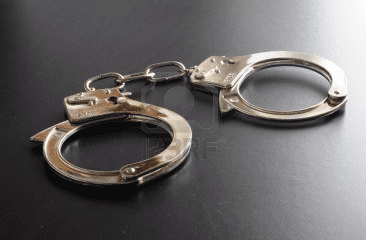http://www.youtube.com/watch?v=jY22VC7IB5U
Years ago, when I was in college, Frontier Violence: Another Look was required reading for one of my Western American History courses. A portion of the book was called “The Myth of Frontier Violence.” The argument: while America’s western frontier could certainly be a violent place, it was no more so than any other part of United States at that time . . .
In terms of violent crime statistics, legendary gunfighting burgs like Tombstone, Dodge City and Deadwood were no more dangerous for the law abiding citizen than any other small town. The western towns were considerably safer than the big cities like New York, Chicago and Boston of that same period, where violent crime against innocent victims was much more common.
What violence did occur was either between admitted criminals, or existed in the lawless, unorganized mining camps that sprung up overnight during the various gold rushes. Those mining camps typically had a very short period of “lawlessness” – measured in weeks or months, not years. After that they either established law and order or withered away when the gold disappeared.
For the most part, the sensationalistic tales of gunfights in the streets were the stuff of pulp novels, much of it invented by Eastern writers eager to perpetuate the myth of the “lawless west” in order to sell books to a gullible public (and the desire of that gullible public to consume said novels.)
Most of what people “know” about the “Wild West” is derived not from historical records but from movies and TV shows of the 1950′s and 60′s (and later, right on up to “Tombstone” and “3:10 to Yuma”).
So when gun control advocates warn that the liberalization of firearms laws will lead to “the Wild West,” you can stop worrying. If only they’d do the same . . .




With gun totin’ Rick Perry in the race we can expect to hear a LOT more about the Wild, Wild West, cowboy diplomacy, etc. YEEHAW!
the American south during the reconstruction period was one of the most violent and least discussed periods in US historiography.
I’d be safer in Tombstone circa 1880 than in The Bronx right now.
The Bronx really isn’t so bad these days, in fact no place in NYC is. For taking your life in your hands Detroit is the place to be.
that or St. Louis: http://www.usnews.com/news/articles/2011/02/16/the-11-most-dangerous-cities
I’m in Detroit at least several days a week. No worries.
Just because you aren’t worried, doesn’t mean you’re not in danger.
Believe me, I’m not worried when you’re in Detroit.
Double-plus-good =D
And the people of New Orleans didn’t worry about the levees, either, right up until everything went horribly wrong.
I also don’t worry about traveling through dangerous areas of the country, because I know that IF something happens, I have a better than average chance of coming out ahead of the encounter.
Sure. The point is that people tend to Dramatize when talking about certain locales — especially ones they’ve never been to. For the most part, Detroit is as safe as any major city. Depends where you go and what you’re doing.
“The point is that people tend to Dramatize when talking about certain locales — especially ones they’ve never been to.”
Yeah! That’s what they do in Russia!
Seriously though it’s certainly not true that all big cities are equally safe. Detroit may not be the post-apocalyptic wasteland of “Robocop” but statistically it’s also not as safe as New York, Chicago or Los Angeles.
Key fact about violent crime: whatever the city, it’s highly localized — almost laser focused in the worst areas. Exclude those areas from the stats and the rates fall straight down. That Detroit is “on average” more dangerous than LA or Boston is not as interesting as the fact that the vast majority of neighborhoods in Detroit are safer than the high-crime neighborhoods in other cities. That’s why I say it depends where you go and what you’re doing.
Didn’t you say you got carjacked? or was that somewhere else then Detroit?
Yes, Detroit.
Wait, I want to make sure I’m following this.
You insist, in the face of multiply sourced contradictory evidence, that owning/carrying a gun for defense is dangerous.
You also insist that one of the top five most crime-ridden cities in America, a place where you personally were the victim of a violent crime, is not dangerous.
You genuinely puzzle me.
I’m not opposed to carrying a gun for protection — necessarily. It depends. A gun wouldn’t have done me any good in this instance. If you don’t mind, I’d like to take this up in a wider venue.
The floor is yours.
This one is rather claustrophobic.
Between 1870 and 1885, including justifiable killings by the police, only forty-five adults died violently at the five major Kansas cattle towns, an average of 1.5 fatalities per cowboy season. Recent efforts by scholars to exaggerate this low body count through the use of criminologists’ “per 100,000 population” ratio have proved statistically fallacious. Nobody died in a Hollywood-style duel. Fewer than a third of the victims returned fire; a number were not even armed. Four deaths were accidental shootings. Famous “bad men” (the term “gunfighter” had not yet been innovated) accounted for few deaths. John Wesley Hardin killed a man snoring too loudly in an adjoining hotel room; Wyatt Earp (or another policemen) killed a carousing cowboy; Bat Masterson dispatched the murderer of his brother; Wild Bill Hickok killed two men, one a security guard, by mistake.
Dykstra, Robert R. The Cattle Towns. New York: Alfred A. Knopf, Inc., 1968.
Dykstra, Robert R. “Overdosing on Dodge City.” Western Historical Quarterly 27 (1996): 505– 14.
The confusion concerning Wild West violence is more understandable if you factor in the senseless slaughter of buffalo and other wildlife. The Chinese, Indians, Mexicans etc. didn’t fair too well either. Rustling and dry-gulching were a sideline for some cowboys and settlers.
http://www.amazon.com/Massacred-Gold-Chinese-Hells-Canyon/dp/0870715704
Not to get too off track, but the buffalo population had exploded because disease wiped out some 80% to 90% of the native Americans in the region, whose hunting had kept their numbers in check.
Ain’t Ma nature great? With guns and mindless abandon the pale face disease vector doubles as a convenient tool for balance. I’ll walk rather than ride that train, if possible.
The GunFight At The OK Corral had nine total participants. 3 people were killed, two were wounded in what was (and is) the most “celebrated” gunfight of the “wild west”.
That would be a CALM day in Nuevo Laredo these days…
I’m sure everyone here is aware of it, so it probably doesn’t need saying, BUT….
The “OK Corral” gunfight was initiated over GUN CONTROL.
And, by our lights if we wish to remain unhypocritical, the WRONG GUYS won.
2 points about Frontier Violence: Another Look by W. Eugene Hollon. First, having looked thru my 1974 Oxford Univ Press hardcover copy, I was unable to find the part mentioned. It isn’t in the table of contents nor in the index, & a Yahoo search turned up zip too. The closest I came to it was a similarly titled piece by Roger McGrath. Second, the book is a bit schizophrenic in that while doing quite a bit to dispel the perception of the American West as a 19th century combination of Pol Pot’s Cambodia & Nazi Germany, Hollon also reveals his bias against guns/gun ownership.. A look at the cartoon in Chapter 6 on page 120 & paragraph 2 on page 121 tells you a great deal about where Hollon’s coming from, & it isn’t from the pro-2A viewpoint. I prefer McGrath’s commentaries as they have more “meat” & less politics, at least from what I’ve seen/read. As far as what happened to the buffalo is concerned, Phil’s slaughter label is accurate when you note that the buffalo “hunters” took only the tongue & the hide & left the rest to rot, that the Army considered buffalo to be a strategic asset & killed them to deprive the “Indians” of food, clothing, & shelter, & that blasting away at the herds from trains was deemed “great sport” by rich Easterners/Europeans. Sure sounds like slaughter to me, at minimum.
Cassandra: The course I took was circa 28 years ago so my memory may be a bit fuzzy and I could be confusing my sources.
In any case, my point was not to be pro-2nd amendment, it was to point out that those people who fear that the widespread carry of guns would lead to “the wild west” are making incorrect assumptions about just how “wild” the West really was.
From the history I’ve read (as opposed to the sensationalistic fiction) the carry of handguns by ordinary citizens was pretty rare in almost all of the West during the 19th century.
Which makes sense, if you think about it: Handguns are expensive, and given that the West wasn’t nearly as wild or crime-ridden as popular fiction has portrayed it to be, there’s no reason why an ordinary citizen would even want a pistol. Rifles and shotguns? Sure, you need those to provide meat and to defend your ranch, but what good does a pistol do for a homesteader? Now, a lawman, an outlaw, or someone who makes a living transporting gold from the gold fields to the bank might need to carry a firearm at all times, but not a common citizen.
It’s worth noting that in the period from 1865 to 1890 when the western territories were being settled and becoming states just about every able bodied male was a veteran of the most bloody war ever fought on US soil. None of them were strangers to shots fired in anger.
Would also note that a primary reason for cowboys to carry a handgun was that should they be thrown from a horse with their leg caught in a stirrup they could shoot the horse to save themselves from being dragged to death.
And buffalo hunters were hide hunters. The hides fueled the need for leather in the east so were a valuable commodity. Sadly, the meat was left to rot save for prime cuts for the hunter’s own meals. Depriving the indian tribes of their primary food source was also a tactic encouraged by the army and bureau of indian affairs. Making them dependent on the government for their food was a means of control.
I live in Phoenix. I only really worry when I visit San Francisco.
Comments are closed.